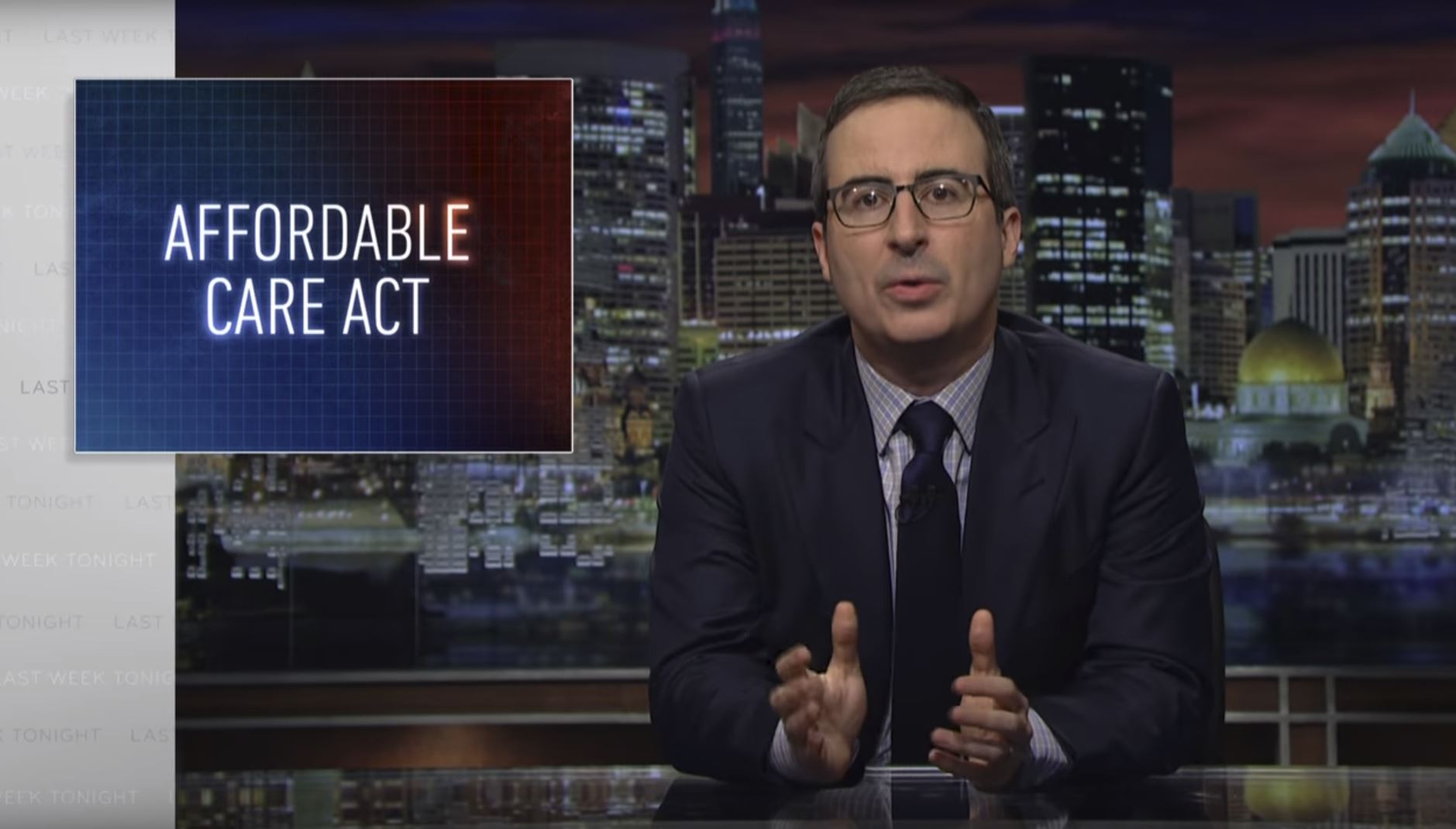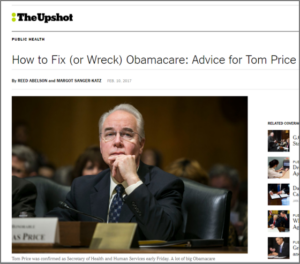The Affordable Care Act (ACA) sparked contention even before its passage in 2010, yet attempts to repeal it have proved to be no less controversial. Throughout the ongoing debate, the USC Schaeffer Center for Health Policy & Economics has served as an essential source of timely, evidence-based analysis.
During spring and summer 2017, the USC-Brookings Schaeffer Initiative for Health Policy responded in real time with in-depth analysis of the flurry of proposals and amendments being considered by Congress, providing reliable and informative insights into the rapidly changing status of repeal efforts on the Hill.
In March 2017, Loren Adler and Matthew Fielder were the first to make robust estimates of the coverage losses from the GOP healthcare plan. The numbers were quickly reported on and used by Hill staffers and journalists trying to make sense of the policy proposals.
Vox reported on the Schaeffer Initiative’s leadership on the issue during that turbulent summer. “Although the CBO [Congressional Budget Office] is still doing its calculations, we have some estimates of the original bill from the USC-Brookings Schaeffer Initiative for Health Policy, which attempted to replicate the CBO’s methodology,” Vox reported on Sept. 25, 2017. “The analysis may be the best estimates the public and Republican senators will see before they vote on the Graham-Cassidy plan.”
The analysis may be the best estimates the public and Republican senators will see before they vote on the Graham-Cassidy plan.
USC Schaeffer experts have published influential pieces in the Sacramento Bee, MarketWatch, the New England Journal of Medicine, the Journal of the American Medical Association and other outlets covering the urgent issues related to healthcare reform. Media outlets citing USC Schaeffer work and the aligned research of the USC-Brookings Schaeffer Initiative for Health Policy include HBO’s Last Week Tonight, National Public Radio, the BBC and American Public Media’s Marketplace, the country’s most popular business show.

Following are some highlights of this continuing work aimed at informing policymakers and the public they serve.
Repeal and Replace

As Congress sped to vote on legislation on repealing and replacing the ACA before the Congressional Budget Office (CBO) could score the expected ramifications, Schaeffer Initiative Associate Director Loren Adler and Fellow Matt Fiedler combined their knowledge of CBO methodology with their economic acumen to explain how the CBO would estimate the health insurance coverage losses attributable to different repeal-and-replace proposals.
Another analysis provided an in-depth estimation of the coverage reductions that would have resulted from the Graham-Cassidy ACA replacement bill. As the legislation was abandoned before CBO analysis could be completed, Adler and Fiedler’s work — predicting that roughly 21 million fewer Americans would have coverage — became the final and most robust analysis of Graham-Cassidy. Both analyses served as trusted resources and were regularly mentioned by members of Congress.
In addition, Fiedler and Adler showed that both the House and Senate ACA repeal bills would lead to an average increase of insurance premiums in the individual market. Fiedler also shone light on how changes to the ACA’s Essential Health Benefits requirements would, however inadvertently, effectively eliminate the ACA’s guarantee of protection against catastrophic costs for people with coverage through large employer plans.
Working with Schaeffer Initiative Nonresident Fellow Mark Hall, Fiedler then detailed the drawbacks of dividing the individual market into one for the sick and one for the healthy, as multiple ACA replacement bills would have done.
Schaeffer researchers also published two reports detailing how the GOP House and Senate healthcare bills would impact the Medicaid program by introducing a per-capita spending cap that was set to grow slower than anticipated healthcare costs. The reports elucidated that the proposal left no way for states to be made better off, leaving them only at risk of losses, and that many states would see very significant funding cuts.
Schaeffer Center influence also goes beyond articles and policy papers. After Republicans assumed control of Congress and the presidency at the end of 2016, Loren Adler and Senior Fellow Alice Rivlin met with House Speaker Paul Ryan’s staff to explain the importance of federal funding for a reinsurance program. Reinsurance would ensure coverage for higher-risk patients by paying part of providers’ claims above a certain amount. Reinsurance has since become a substantial component of Republican healthcare bills.
Coverage Alternatives
Pointing out that the ACA tried to cover too much, Schaeffer Center Director Dana Goldman proposed a bold plan with Kip Hagopian for providing catastrophic insurance to every American not covered by Medicare and Medicaid. In addition to providing a measure of protection for the currently uninsured, the plans would supplant the catastrophic portion of existing policies held by people with coverage. However, employers, individuals and families would remain free to buy the extra coverage they want.
“By limiting the breadth of coverage and by spreading risk over a massive pool, we minimize the cost of insurance while protecting people from financial loss,” Goldman and Hagopian wrote in Forbes.
An independent RAND Corporation analysis found that people below 300 percent of the federal poverty line would have lower out-of-pocket costs with this plan than under the ACA. The plan would account for people with disabilities by enabling them to have lower deductibles.
“To keep the plan progressive and affordable for all, deductibles would be tied to income. Services that are very effective would be exempt from the deductible and fully covered. This includes many prevention services — like flu shots — but also medications for chronic disease, certain vaccines and the like,” Goldman wrote in STAT.” He adds that putting everyone in one risk pool would eliminate the issue of preexisting conditions. The plan also would solve the problem of maintaining coverage when between jobs and lower costs by keeping the young and healthy — and not just the older and sick — insured.
Payment Reform
As the Center for Medicare & Medicaid Innovation (CMMI) tests the benefits of new payment and delivery models, USC Schaeffer Visiting Associate Professor John A. Romley and Director of Public Policy Paul Ginsburg contend that bolstering hospitalization-based bundled payments are vital to reducing healthcare costs.
“Hospitalization-based bundling offers a significant opportunity for improved performance within the healthcare system, especially for episodes for which a substantial share of the care associated with an episode is typically delivered after the hospitalization,” they write.
Romley and Ginsburg also urge policymakers revisit the issue of mandatory participation by healthcare providers. While CMMI’s mandatory payments were cancelled by the Trump administration, they write, this “approach is more effective in sustaining and maximizing the potential of payment and delivery reforms over time, by building the evidence about what works and helping to achieve scale for effective models.”
You must be logged in to post a comment.